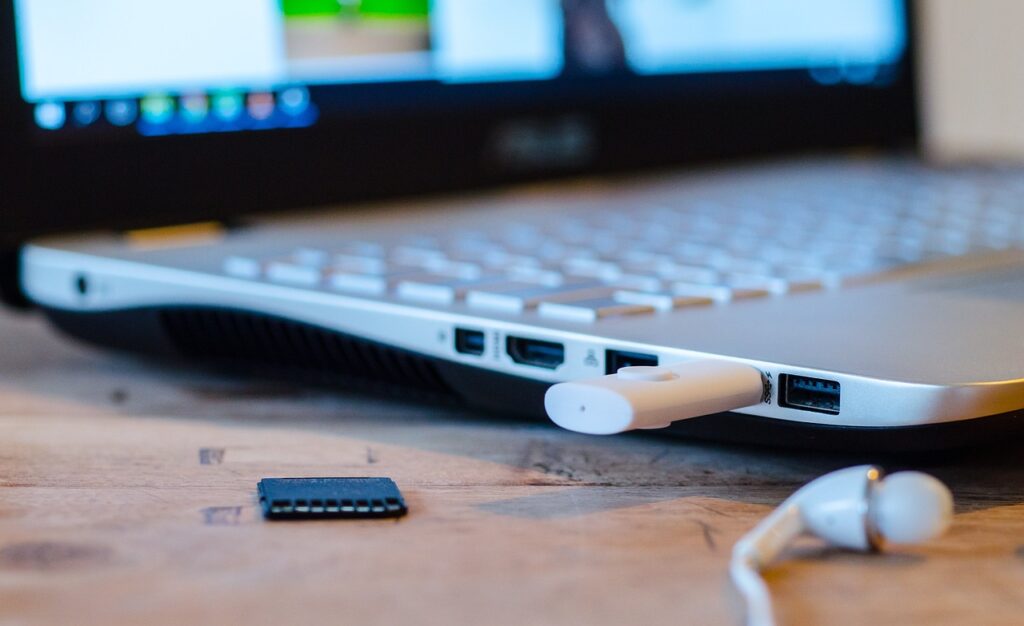Full form of USB

USB is the industry standard used to connect the computer to electronic devices. It defines connectors, USB cables and protocols used in buses for communication between Laptops/Computers and Electronics devices. It reduces power consumption too.
What is the full form of USB?
The full form of USB is Universal Serial Bus. It is the most common type of port in a computer system.
The long form of USB: Universal Serial Bus was designed for power supply and to transfer data between peripheral devices such as printers, keyboards, mouse, digital cameras, media devices and various disk drives etc.
History
In 1994, USB was made first developed by a group of seven companies namely Microsoft, DEC, Compaq, NEC, IBM, Intel and Nortel. It was developed to make it easy for people for connecting external devices to computers. It is accessible and very simple, matches the computer language and is easy to connect over various platforms like MAC, Windows, Linux etc.
The process for connecting USB to Computer
Inserting the USB device is very easy. Just insert the USB device into the USB port to the Laptops/Computers. It will automatically detect that USB drive and not necessary to reboot the computer.
USB Connectors types
USB full form is Universal Serial Bus connectors available in different shapes and sizes. and the three basic sizes:
- Standard size
- Micro size – It replaced the Mini-USB and was announced in 2007. Micro-USB comes in two different variations and which are Micro-A and Micro-B and both have a size of 6.85 x 1.8 mm. This type of USB cable is widely used with video game controllers, for charging smartphones and connecting computer peripherals.
- Mini size – It is known as Mini-USB or Mini-B. It is used with computer peripherals and cameras. This site has been replaced by Micro-USB and USB-C cables.
Nowadays, the USB type-C cable is widely used in Android smartphones and in other USB-connected devices. USB type-C cables are different from the other types of USB connections. USB type-C cables come in small sizes, have faster data transfer rates and carry up to 100w of power.
Characteristics of USB
Some required characteristics of USB are listed below:
- Modern computers are coming with USB 3.0 and it has a maximum speed of up to 625 MB/s.
- The single USB host controller can be used to connect up to 127 peripherals.
- Most USB devices support the ‘plug-and-play’ mechanism and which means this device does not require additional software to start working on the computer.
- If some USB devices come with power-saving mode and those devices will automatically go into sleep mode when the computer system is idle for a long time.
- USB devices can use power from a computer without the need for an external power supply and such examples are Mouse, Keyboard, external storage devices, etc.
USB Devices
There are various types of USB devices which can connect to your computer. Here’s the list of such kind of devices is as follows:
- Keyboard
- Mouse
- Digital Camera
- Keypad
- Microphone
- Scanner
- Webcams
- Smartphones
- Joystick
- Printer
- Tablet
- External Drive
- iPod or other MP3 players etc.
Advantages
The advantages of using USB are given below:
- Less power consumption
- Robust in nature
- Plug and Play in nature
- Up to 127 peripherals can be connected to one computer at the same time
- It is available in different sizes and is Easy to use
- USB fits with every USB port
Disadvantages
The disadvantages of using USB are given below:
- As compared to other devices, transferring data cannot be done faster
- The performance of USB is limited
- It does not provide a broadcasting feature for messaging
- Peripherals and hosts can be communicated through the single message
Conclusion
USB full form in Computer Universal Serial Bus is an interconnect, communication, and computing standard for connections. All Digital devices with a USB port can be connected to a host computer and it is supported by most operating systems. It is a requirement for the computer to be able to run any of the digital devices that plug into USB ports. Now, you will understand how it has revolutionized the way we use our smart electronic devices these days.
Read Also:
